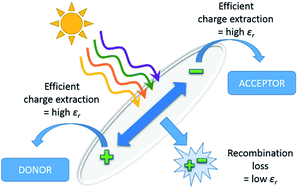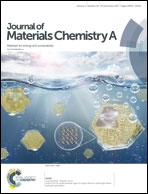High dielectric constant conjugated materials for organic photovoltaics
Abstract
Organic photovoltaics (OPV) offer a low-cost and esthetically appealing thin-film alternative to the well-known silicon-based solar panels, opening up new applications and markets. A substantial increase in power conversion efficiency (to over 13%) has been achieved for these organic solar cells over the last decade, largely as a result of intensive research on novel electron donor and acceptor materials, combined in a bulk heterojunction device structure. Nevertheless, it is clear that further progress is required to be competitive with more efficient traditional and other emerging thin-film PV technologies. At this moment, the device performance is (among others) limited by the low dielectric constants (εr = ∼3 to 4) of the state of the art photoactive organic materials. Important loss processes inherently connected to the strong coulombic interactions within low-permittivity organic materials can be suppressed through the enhancement of εr. High dielectric constant materials show lower exciton binding energies and hence recombination can be reduced, improving the charge carrier extraction efficiency. Despite these promising prospects, limited research has been devoted to the development and OPV integration of high-dielectric organic semiconductors. In here, an overview is provided of the approaches applied so far to enhance εr of organic compounds specifically developed for OPV purposes, commenting on the insights obtained and the challenges remaining.

- This article is part of the themed collection: Recent Review Articles


 Please wait while we load your content...
Please wait while we load your content...